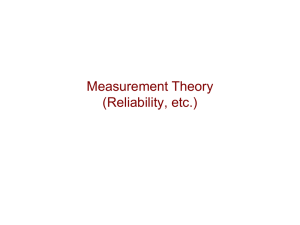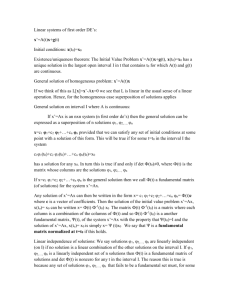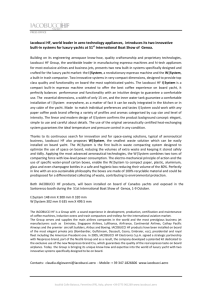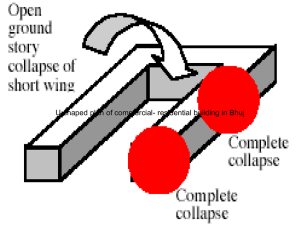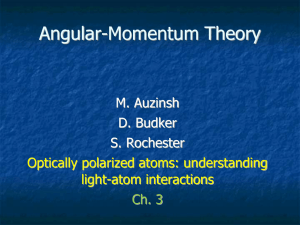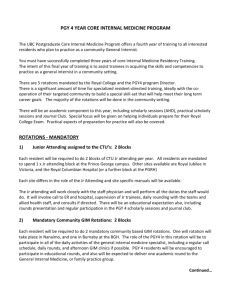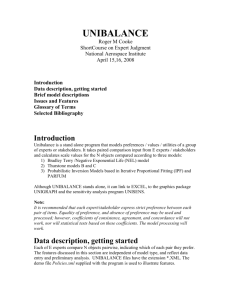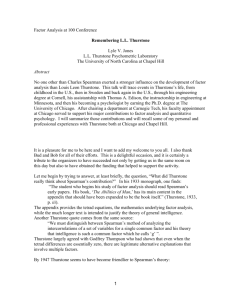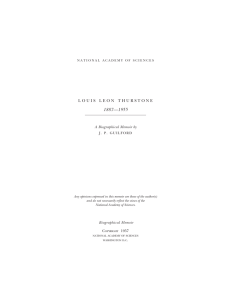I.A. Review of Basic Inferential Statistics
advertisement
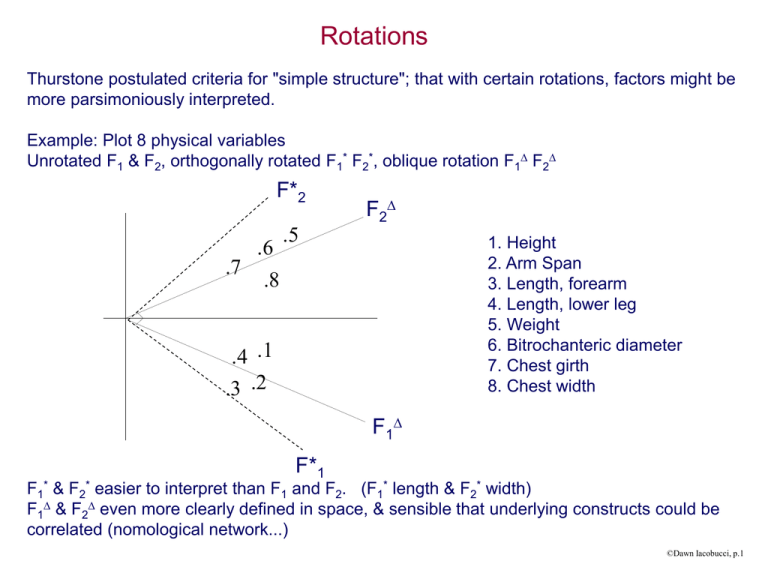
Rotations Thurstone postulated criteria for "simple structure"; that with certain rotations, factors might be more parsimoniously interpreted. Example: Plot 8 physical variables Unrotated F1 & F2, orthogonally rotated F1* F2*, oblique rotation F1∆ F2∆ F*2 .6 .7 .8 F2∆ .5 1. Height 2. Arm Span 3. Length, forearm 4. Length, lower leg 5. Weight 6. Bitrochanteric diameter 7. Chest girth 8. Chest width .4 .1 .3 .2 F1∆ F*1 F1* & F2* easier to interpret than F1 and F2. (F1* length & F2* width) F1∆ & F2∆ even more clearly defined in space, & sensible that underlying constructs could be correlated (nomological network...) ©Dawn Iacobucci, p.1 Rotations Next: Theory: Thurstone's criteria for simple structure Practice: How to implement Do not bother to interpret unrotated factor pattern matrix. All rotation algorithms built to max simple structure; ease interpretation of factors. x x x x x x x x x x x x x x x x x x x x x x x x Thurstone's 5 rules for rotating a B to A = BT to simple structure: (from Thurstone, L.L. (1947), Multiple Factor Analysis, U of C Press.) 1) Each row (var) of the factor pattern matrix (A) should have at least one zero (or practically: near-zero) loading. (i.e., a variable shouldn't load on all factors.) (Comment: Probably also want at least one loading per variable to be high — otherwise variable contributes just unique variation and perhaps should be removed from subset of variables F analyzed.) ©Dawn Iacobucci, p.2 Rotations 2) Each column (factor) should have at least r zero elements (and the zeros for 1 factor should be unique from the zeros for any other factor — linear independence) E.g., okay not okay (1st & 3rd) O O O O O O O O O O O O O O O O O O 3) For every pair of columns (factors), there should be at least r variables with a zero coefficient in one column and a nonzero coefficient in the other (linear indep again) 4) When r > 3, for every pair of columns (factors), there should be a large proportion of variables with zeros in both columns. 5) For every pair of columns (factors), there should be only a small proportion of variables with nonzeros in both columns. Example of a factor pattern matrix that exhibits simple structure (from McDonald, 1985, p.82, the x's indicate nonzero loadings.): X X X 0 X 0 0 0 X 0 X 0 X X X 0 X 0 X 0 0 X 0 0 X X X ©Dawn Iacobucci, p.3
